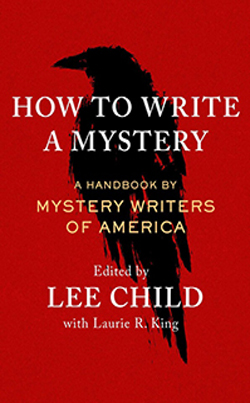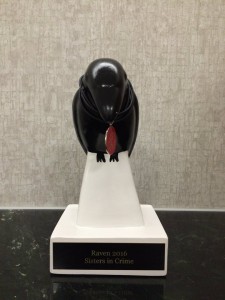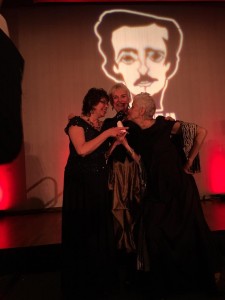Earlier this year, a blog subscriber sent me this email:
“I am working on a novel that falls into the mystery genre and it’s time I got involved with the mystery community. I have been to many writing conferences but never focused on any genre before. I see that you are/have been involved with Sisters In Crime and Mystery Writers of America. I’d like your take on what an as-yet-unpublished writer in the genre can expect from their involvement with these (and I know there are others) organizations. I can usually attend one writing conference per year, am comfortable with zoom meetings, and as mentioned I particularly like being connected to writers in the west.“
I thought it might be useful to share my reply, edited a bit, since I think my advice applies broadly. I left in the regional references; with more than 60 Sisters in Crime chapters and eleven regional MWA chapters, many with meetings throughout their geographic spread, it’s not hard to find a mystery-focused writing community. And the benefits are top-notch, no matter where you are.
Hi, Lynn –
[Lovely comments about my latest book omitted.]
So where should an aspiring mystery writer start? With reading, of course, but you’ve nailed that. Either SinC or MWA would be a great starting point; MWA is geared toward the professional writer, while SinC’s mission is a little broader. Check out the SinC Guppies chapter; it’s online, a boon for those of us in the boonies, and aimed at the new and unpublished. The Guppies offers a regular slate of classes led by some excellent instructors – I’m sure this year’s schedule is on the website. The Guppies online discussion list is a great resource, although it could be a bit daunting for a newbie. SinC National – you have to be a member to join a chapter – also offers webinars at least once a month on a wide range of craft, promotion, and business topics; members have access to the archives. And both have truly excellent newsletters – the Guppies’ First Draft is bi-monthly and InSinC is quarterly.
You might also check into the Denver SinC chapter, especially if you get there with any regularity – under normal circumstances. I know several of the leaders but I don’t know how they’ve handled programming in the last two years; I imagine that most of it is now online, but that they will begin moving to a hybrid model with in-person events and an online option as soon as it’s reasonable to do so. In-person connections are invaluable.
MWA’s Rocky Mountain chapter meets in Denver, with terrific monthly programming. (I say modestly, having spoken there a few years ago, on common mistakes writers make about the law.) The meetings are in-person and broadcast, with replays of the programs available online and summarized in the monthly newsletter.
I’m also a big believer in self-education, and a great resource is the new MWA book, How to Write a Mystery: A Handbook from the Mystery Writers of America, ed by Lee Child and Laurie R. King. (I do have a small piece in it.) The hardcover came out last April; I think the paperback will be out this spring.
You asked about conferences focused on mystery. Since you’ve attended writing conferences, you probably know the difference between writers conferences, aimed at the craft and business of writing, and fan conventions like Malice, Left Coast Crime, and Bouchercon, where the goal is to create opportunities for fans to interact with authors, although other industry pros also attend. The main conferences focused on mystery writing have changed a bit but I think they are the biennial California Crime Writers conference (a joint event between the MWA SoCal chapter and the CA Writers Club, IIRC), the New England Crime Bake (a joint MWA-SinC event), Killer Nashville, and Book Passage Mystery Conference, sponsored by the Book Passage bookstore just north of San Francisco. I attended the Crime Bake when I was SinC president and it is fabulous. I also attended the BP conference and loved it, but that was 20 years ago and I don’t know much about it now. Several SinC and MWA chapters hold one-day events, too – Desert Sleuths in Phoenix comes to mind; membership is not typically required. I know the Crime Bake and Desert Sleuths offered some sort of Zoom version in the last couple of years. See if you can find a calendar of events on the SinC website – that will provide a lot more info than I can. I did find the conventions helpful when I was starting out, but they are a vastly different type of event, and I hate to see writers attend with the wrong expectations.
So that’s what I can suggest. If you have more questions, do feel free to ask. And my thanks again for your kind words about the More Than Malice panel and Bitterroot Lake. They mean a lot.
All the best to you and your mother in this new year,
Leslie




 When I arrived at Malice at noon Friday, a board member greeted me by saying, “I heard you kicked ass.” Well, maybe, in a sparkling navy gown, black kitten heels, and a purloined necklace. So, since I’ve been asked for the acceptance speech, here it is — and here I am with immediate past president Catriona McPherson and past president/founding mother Sara Paretsky.
When I arrived at Malice at noon Friday, a board member greeted me by saying, “I heard you kicked ass.” Well, maybe, in a sparkling navy gown, black kitten heels, and a purloined necklace. So, since I’ve been asked for the acceptance speech, here it is — and here I am with immediate past president Catriona McPherson and past president/founding mother Sara Paretsky.